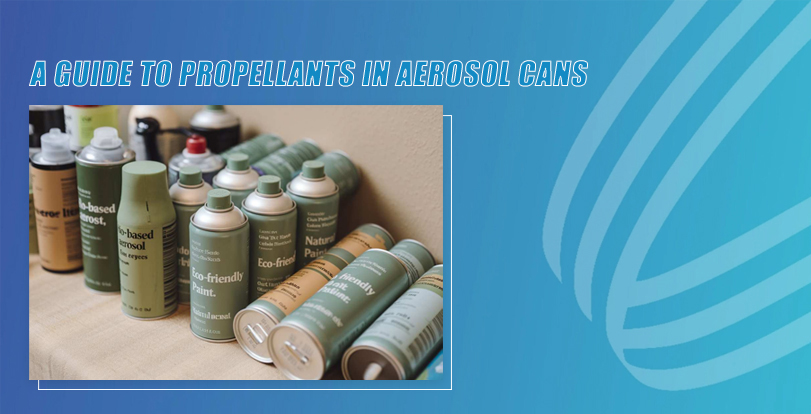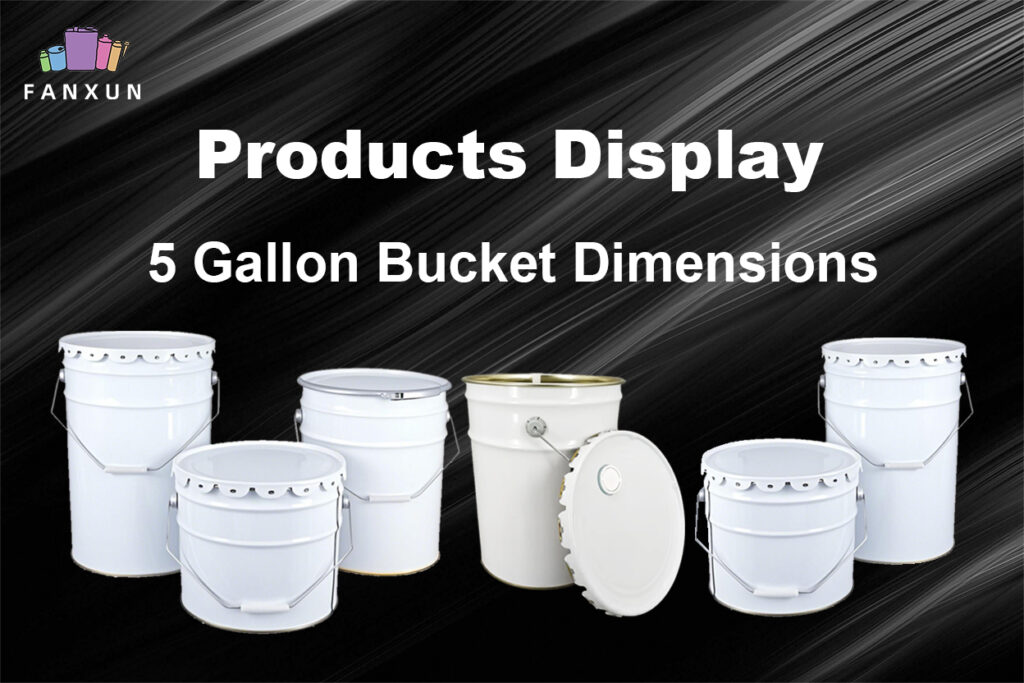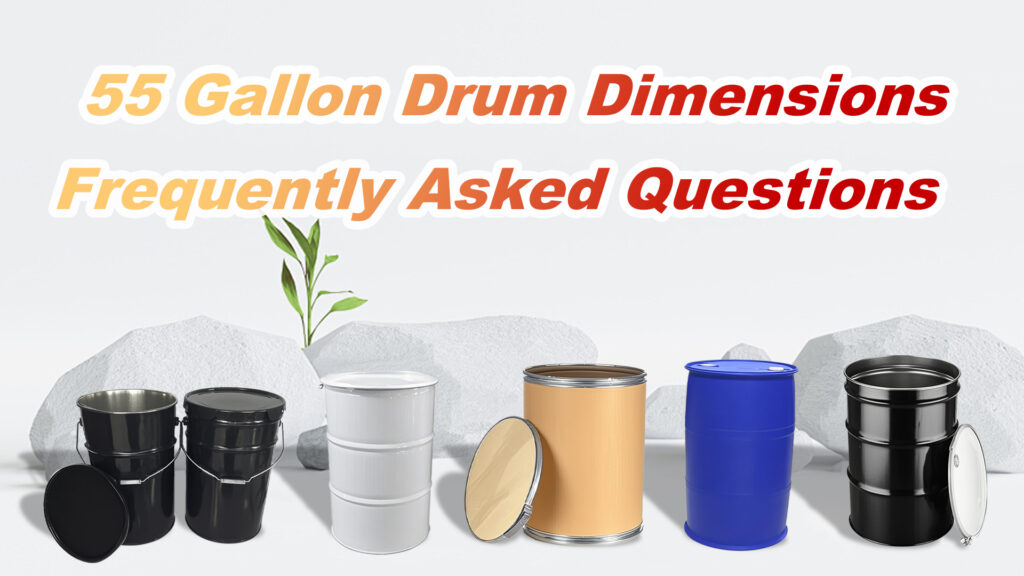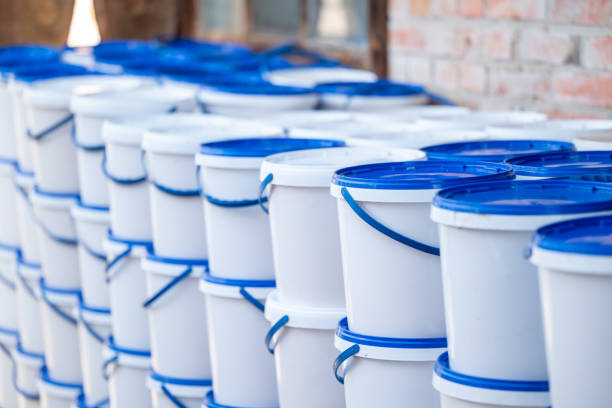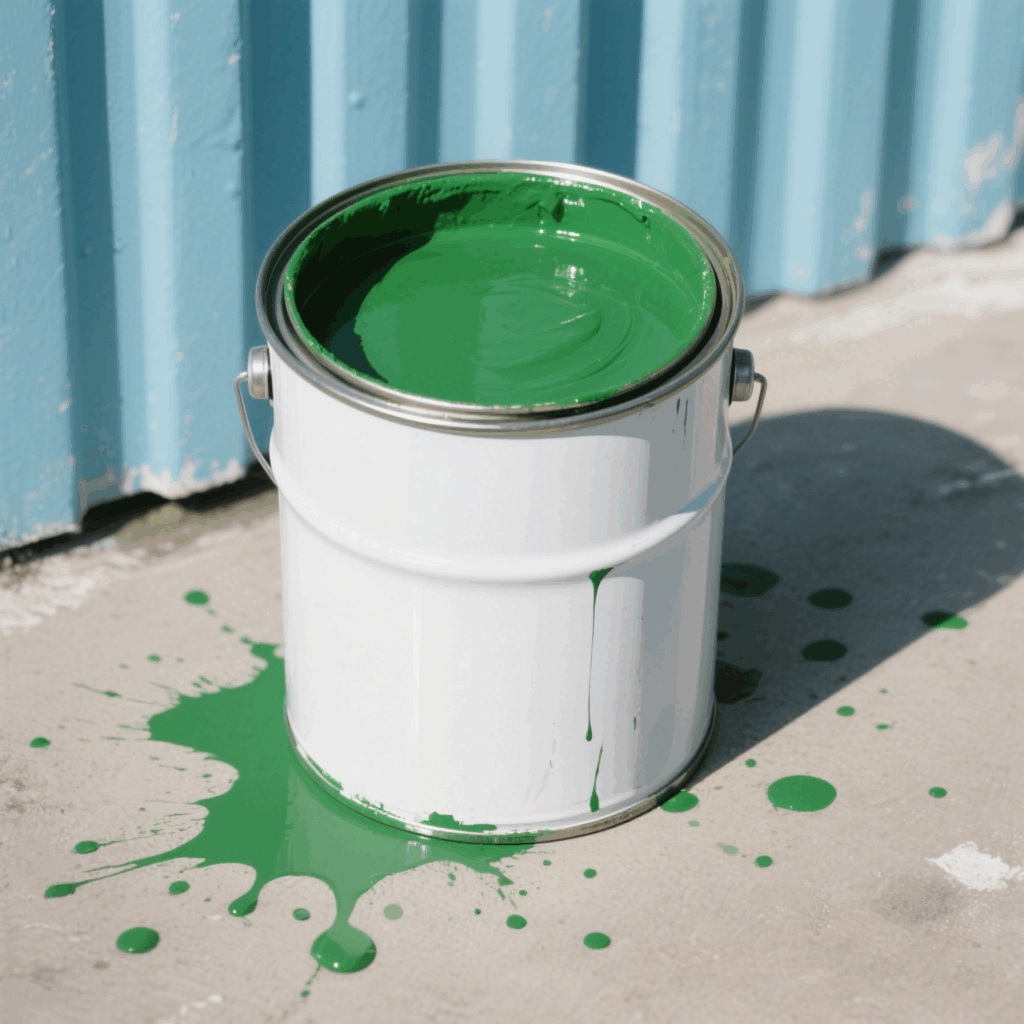Ever wondered what gives an aerosol spray its “spritz”? From hairspray locking your style in place to a disinfectant mist clearing the air, or even the satisfying whoosh of whipped cream from a can, there’s a hidden force at work: the propellant. Aerosol products are a ubiquitous part of modern life, offering convenience and specific application methods that are hard to achieve otherwise. But what exactly are these propellants? How do they work? Are they safe? What about their environmental impact?
If you’ve ever found yourself pondering these questions while holding a can of deodorant or spray paint, you’ve come to the right place. This guide is designed to be your one-stop resource, demystifying the world of aerosol propellants. We’ll journey from the basics of how an aerosol can functions to the nitty-gritty details of different propellant types, their pros and cons, safety considerations, environmental footprint, and the factors that go into choosing the right one for a specific product. Whether you’re a curious consumer, a budding product developer, or just someone who wants to understand the technology behind everyday items, this guide aims to provide clear, comprehensive, and easy-to-understand answers.
Let’s dive in and uncover the science and considerations behind the power in the can.
What Exactly Is an Aerosol Propellant?
At its core, an aerosol propellant is a gas, or a substance that readily turns into a gas, stored under pressure within an aerosol can alongside the product you actually want to dispense (like paint, ヘアスプレー, disinfectant, or food).
Think of it like the fizz in a can of soda. When the soda is sealed, the carbon dioxide gas is dissolved in the liquid under pressure. When you open the can, the pressure is released, and the gas comes out of solution, creating bubbles and pushing the liquid out if you were to tip it or shake it vigorously.
Similarly, in an aerosol can, the propellant exists in a pressurized state. Its primary job is simple but crucial: to provide the force needed to push the product out of the can when you press the nozzle (actuator). It does this by maintaining pressure inside the container. When the valve is opened, this pressure forces the mixture of product and propellant up a dip tube and out through the nozzle, atomizing the product into a spray, mist, foam, or stream, depending on the formulation and nozzle design.
How Do Aerosol Cans Actually Work? A Look Inside
To truly appreciate the role of the propellant, let’s quickly break down the anatomy and mechanics of a typical aerosol can:
- 缶: Usually made of steel or aluminum, designed to withstand the internal pressure safely.
- The Product Concentrate: This is the actual substance you want to use – the paint, insecticide, hairspray formula, 等.
- 推進剤: 説明したように, the gas or liquefied gas responsible for pressurization and expulsion. It might be mixed with the product or exist as a separate layer.
- バルブ: A mechanism crimped onto the top of the can. It keeps the contents sealed under pressure until activated. It controls the flow of the product out of the can.
- アクチュエータ (Nozzle/Button): The button you press. It opens the valve and often includes a specific nozzle design to shape the spray (例えば。, fine mist, targeted stream).
- The Dip Tube: A plastic tube extending from the valve down to near the bottom of the can. This ensures that the liquid product/propellant mixture is drawn up and dispensed, rather than just the gas at the top (for most upright-use aerosols).
The Magic of Pressure and Phase Change:
The real cleverness, especially with liquefied gas propellants (which we’ll discuss in detail soon), lies in maintaining pressure. These propellants exist inside the can as both a liquid and a gas (in the headspace above the liquid).
- Initial State: The propellant’s vapour pressure creates a constant pressure in the headspace.
- Activation: アクチュエータを押すとき, the valve opens. The pressure in the headspace forces the liquid mixture (product + liquid propellant) up the dip tube and out the nozzle.
- Maintaining Pressure: As the product/propellant mixture is expelled, the volume of liquid inside the can decreases. 重要です, some of the liquid propellant instantly boils and turns into gas to fill the newly available headspace. This maintains a relatively constant pressure inside the can throughout most of its usable life, ensuring a consistent spray performance until the can is nearly empty. This is why a can using a liquefied propellant doesn’t lose its “oomph” halfway through like a simple bicycle pump would.
- Atomization: As the mixture exits the nozzle, the propellant rapidly expands and vaporizes in the lower atmospheric pressure, helping to break up the product concentrate into fine droplets – creating the aerosol spray.
Compressed gas propellants work slightly differently. They exist only as a gas in the headspace and don’t liquefy under the can’s pressure/temperature conditions. They simply push the product out like a piston. The downside? As the product level drops, the headspace volume increases, and the gas pressure decreases, often leading to a weaker spray towards the end of the can’s life.
Types of Aerosol Propellants: The Main Players
Propellants aren’t a one-size-fits-all solution. Different applications require different properties. They are broadly categorized into two main groups: Liquefied Gases and Compressed Gases.
1. Liquefied Gases
These are substances that exist as liquids under pressure at room temperature but turn into gases when the pressure is released. They offer the significant advantage of maintaining relatively constant pressure throughout the life of the can.
-
炭化水素 (HCs):
- Examples: Propane (A-108), Isobutane (A-31), n-Butane (A-17), and blends (例えば。, A-46, A-70).
- Properties: Excellent propellants, provide good pressure range, relatively inexpensive, good solvents for many products, generally low chemical reactivity.
- Pros: 費用対効果が高い, widely available, versatile pressure options through blending, good performance.
- Cons: Highly flammable, classified as Volatile Organic Compounds (VOC) which contribute to ground-level ozone (smog) formation. Their use is regulated in some regions (like California by CARB – California Air Resources Board) to limit VOC emissions.
- Common Uses: ヘアスプレー, 消臭剤, spray paints, insecticides, household cleaners, industrial sprays.
-
フルオロカーボン (HFCS):
- Examples: HFC-152a (Difluoroethane), HFC-134a (Tetrafluoroethane).
- Properties: Generally non-flammable or low flammability (HFC-152a is flammable, HFC-134a is not), chemically stable, good performance.
- Pros: Offer non-flammable options crucial for certain applications (like medical inhalers or electronics dusters where sparks are a concern), good compatibility with many products.
- Cons: High Global Warming Potential (GWP). They are potent greenhouse gases. Due to international agreements like the Kigali Amendment to the Montreal Protocol, HFCs are being phased down globally. They are also generally more expensive than hydrocarbons.
- Common Uses: Metered-dose inhalers (MDIs) (though transitioning away), electronics dusters, some personal care products, industrial applications requiring non-flammability. 注記: The use of HFCs is declining rapidly due to environmental regulations.
-
Hydrofluoroolefins (HFOs):
- Examples: HFO-1234ze (trans-1,3,3,3-Tetrafluoropropene).
- Properties: Similar performance characteristics to HFCs but with significantly lower environmental impact.
- Pros: Very low GWP (often less than 1, compared to HFCs which can be >1000), often non-flammable, not classified as VOCs in many regions. Considered a leading next-generation propellant.
- Cons: Currently more expensive than HCs and HFCs, newer technology so long-term compatibility data is still evolving for some niche applications.
- Common Uses: Replacing HFCs in applications like technical aerosols, foam blowing agents, some personal care products, air conditioning refrigerants (which share similar chemistry). Seen as the future for many applications currently using HFCs.
-
Dimethyl Ether (DME):
- Properties: Unique solvent properties, miscible with water (unlike hydrocarbons). Provides good pressure characteristics.
- Pros: Excellent solvent power (can reduce the need for other solvents in the formulation), water miscibility allows for different types of formulations (例えば。, water-based sprays), good spray performance.
- Cons: Flammable, can sometimes affect certain plastics or rubbers (material compatibility testing is important).
- Common Uses: ヘアスプレー (offers good hold), spray paints (solvent properties help), some pharmaceutical or cosmetic applications, polyurethane foams.
2. Compressed Gases
These gases remain in their gaseous state inside the can under pressure. They don’t liquefy.
- Examples: 窒素 (N2), Carbon Dioxide (CO2), 亜酸化窒素 (N2O), 圧縮空気.
- Properties: Environmentally benign (low GWP, non-ozone depleting), generally inert (non-reactive), non-flammable.
- Pros: Excellent environmental profile, non-flammable, inexpensive (especially Nitrogen and Air), suitable for food products (CO2, N2O), inertness prevents product degradation.
- Cons: Pressure drops as the product is used up leading to inconsistent spray performance or product retention (leaving unused product in the can). Often produce coarser sprays compared to liquefied gases. Limited solubility in most product concentrates.
- Common Uses:
- Nitrogen/Compressed Air: Food products (cooking sprays where propellant shouldn’t mix), dispensing viscous products, technical sprays where flammability is zero-tolerance. Often used in Bag-on-Valve (BoV) systems where the gas surrounds a bag containing the product, squeezing it out without mixing.
- Carbon Dioxide (CO2): Food products (some whipped creams, carbonated beverages – though less common in aerosols now), industrial applications. Can slightly acidify water-based products.
- 亜酸化窒素 (N2O): Primarily used for whipped cream aerosols (it dissolves slightly in the fat, helping to create the foam structure and has a slightly sweet taste), some industrial uses.
Choosing the Right Propellant: A Balancing Act
Selecting the appropriate propellant is a critical decision in aerosol product development. It’s not just about making the product spray; it involves balancing multiple factors:
-
Product Compatibility:
- Solubility: Will the propellant dissolve in or mix well with the product concentrate? Hydrocarbons and DME are good solvents for many organic materials. Compressed gases have very low solubility. HFCs/HFOs have varying solubility. Poor compatibility can lead to separation, uneven spraying, or clogging.
- Reactivity: Will the propellant react chemically with the product ingredients, the can lining, or the valve components over time? Inertness is key for stability. Compressed gases like Nitrogen are very inert.
-
Desired Spray Characteristics:
- Fine Mist vs. Coarse Spray: Liquefied gases generally produce finer mists due to their rapid expansion upon release. Compressed gases tend to produce coarser, wetter sprays.
- Foam or Stream: Different propellant choices and valve/actuator designs enable foams (like shaving cream or mousse) or solid streams (like lubricant applicators). Nitrous oxide is key for whipped cream foam.
- Pressure Profile: Does the product need consistent pressure from start to finish (favors liquefied gases) or can it tolerate a drop-off (acceptable for some compressed gas applications)?
-
Flammability Requirements:
- High Flammability (炭化水素, DME): Acceptable for many consumer products like hairspray or deodorant where usage instructions warn against ignition sources. Requires specific labeling (例えば。, flammable symbol). Manufacturing and storage require strict safety protocols.
- Low/Non-Flammability (HFC-134a, HFO-1234ze, Compressed Gases): Essential for products used near potential sparks (electronics dusters), in confined spaces, for medical applications (MDIs), or where regulations mandate non-flammability.
-
環境への影響: This is increasingly crucial.
- Ozone Depletion Potential (ODP): Chlorofluorocarbons (フロン類) were phased out globally under the Montreal Protocol because they depleted the ozone layer. Today’s common propellants (HCs, HFCS, HFOs, DME, Compressed Gases) have zero ODP.
- Global Warming Potential (GWP): This measures how much heat a greenhouse gas traps in the atmosphere compared to CO2. HFCs have high GWPs (例えば。, HFC-134a GWP ≈ 1430). HCs have low GWPs (typically <10). HFOs have ultra-low GWPs (often <1). Compressed gases also have negligible GWPs. Regulations (like the Kigali Amendment, EU F-Gas Regulation) are driving the move away from high-GWP HFCs towards HFOs, HCs, or compressed gases.
- 揮発性有機化合物 (VOC): These contribute to smog. Hydrocarbons and DME are VOCs. Regulations in places like California (CARB) limit the percentage of VOCs allowed in certain consumer product categories, pushing formulators towards low-VOC propellants like HFC-152a (though it has GWP concerns), HFOs, or compressed gases, or using water-based formulations with less propellant.
-
料金:
- Hydrocarbons are generally the cheapest option.
- Compressed gases are also relatively inexpensive.
- DME is moderately priced.
- HFCs are more expensive, and their prices may fluctuate due to phase-down schedules.
- HFOs are currently the most expensive option, though prices are expected to decrease as production scales up.
- Cost considerations include not just the raw material price but also handling, safety infrastructure (for flammables), and formulation adjustments.
-
Regulatory Landscape:
- Manufacturers must comply with international agreements (モントリオールプロトコル, Kigali Amendment), regional laws (EU F-Gas, REACH), and national/state regulations (US EPA SNAP program, California CARB rules) regarding propellant use, labeling, and environmental impact. This landscape is constantly evolving, especially concerning GWP and VOCs.
-
Safety Considerations (End User and Manufacturing):
- Besides flammability, factors like toxicity (most common propellants have low toxicity when used properly but can be asphyxiants in high concentrations or abused), pressure hazards, and compatibility with container materials are crucial.
Safety Aspects You Should Know About Aerosol Propellants
Aerosol cans are generally safe when manufactured, stored, and used correctly. しかし, the propellants introduce specific hazards users should be aware of:
-
可燃性: As mentioned, 炭化水素 (ブタン, Propane) and DME are flammable.
- NEVER use aerosols containing flammable propellants near open flames, sparks, pilot lights, heaters, operating electrical appliances, or any other ignition source.
- DO NOT smoke while using these products.
- Store them away from heat and direct sunlight.
-
吸入リスク: While designed for specific spray applications, the contents should not be intentionally inhaled.
- ALWAYS use aerosols in well-ventilated areas. Avoid prolonged spraying in small, enclosed spaces.
- INTENTIONAL MISUSE by deliberately inhaling the contents (known as “huffing” or abuse) is extremely dangerous and can be fatal, even on the first instance. Propellants can cause asphyxiation, heart problems (sudden sniffing death syndrome), and damage to the brain and organs.
-
Pressure Hazards: Aerosol cans contain contents under pressure.
- NEVER puncture or incinerate (burn) エアゾール缶, even when empty. They can explode violently if heated, as the internal pressure increases dramatically.
- Store cans below recommended temperatures (usually 50°C or 120°F – check the label). Avoid leaving them in hot cars or direct sunlight.
-
廃棄: Proper disposal is important for safety and the environment.
- Ensure the can is completely empty before disposal. Use the product until no more comes out.
- DO NOT attempt to puncture the can to release residual pressure.
- Check your local recycling guidelines. Many communities accept empty steel and aluminum aerosol cans for recycling, but rules vary. Some may require removing the plastic cap or actuator. If unsure, dispose of it in regular household waste unless local rules specify otherwise (例えば。, hazardous waste collection for partially full cans).
環境への影響: Past, Present, and Future
The environmental story of aerosol propellants is one of significant change and ongoing improvement.
-
The Past: CFCs and the Ozone Hole: In the mid-20th century, Chlorofluorocarbons (フロン類) were widely used as propellants due to their excellent properties (non-flammable, stable, effective). しかし, in the 1970s and 80s, scientists discovered CFCs were depleting the Earth’s protective ozone layer. This led to the landmark モントリオールプロトコル (1987), an international treaty phasing out CFC production and consumption. The aerosol industry rapidly transitioned away from CFCs, primarily to Hydrocarbons (HCs) and Hydrofluorocarbons (HFCS). This transition is a major environmental success story, demonstrating the industry’s ability to adapt. 今日, consumer aerosols do not contain ozone-depleting CFCs.
-
The Present: HFCS, GWP, and VOCs: While HFCs solved the ozone problem, their high Global Warming Potential (GWP) emerged as a significant climate change concern. This led to the Kigali Amendment (2016) to the Montreal Protocol, which aims to phase down the production and use of HFCs globally. Alongside GWP, 揮発性有機化合物 (VOC) – primarily from Hydrocarbons and DME – remain a concern for air quality (smog formation) in urban areas, leading to regional regulations limiting their content in products.
-
The Future: Low-GWP & Low-VOC Solutions: The industry is now actively moving towards propellants with both low GWP and low/zero VOC impact.
- Hydrofluoroolefins (HFOs): HFO-1234ze is a prime example, offering non-flammability and ultra-low GWP (<1). They are becoming the preferred choice for replacing HFCs in many applications.
- 炭化水素 (HCs): Despite VOC concerns, their low GWP and cost-effectiveness mean they will likely remain important, especially where flammability is acceptable and VOC limits can be met through formulation (例えば。, using more water or less propellant).
- Compressed Gases: Their excellent environmental profile makes them attractive, especially with innovations like Bag-on-Valve (BoV) テクノロジー. BoV uses compressed air or nitrogen to squeeze a product-filled bag, allowing for propellant-free product dispensing (the gas never mixes with the product) and enabling 360° spraying and nearly complete product emptying.
- Dimethyl Ether (DME): Its unique solvent properties and water miscibility offer formulation advantages that can sometimes help reduce overall environmental impact despite being a VOC and flammable.
- Formulation Innovation: Reducing the amount of propellant needed by optimizing the product concentrate, using water-based formulations, or employing alternative dispensing systems (like pumps or non-aerosol sprays) are also key strategies.
Sustainability is a major driver. Manufacturers are increasingly focused on using recycled materials for cans, reducing propellant quantities, and choosing the most environmentally responsible propellant feasible for each product’s performance requirements.
よくある質問 (よくある質問) About Aerosol Propellants
-
Are all aerosol sprays bad for the environment? いいえ. This is a common misconception stemming from the historical issue with CFCs and the ozone layer. Modern aerosols do not use CFCs. While current propellants like HFCs (being phased down) have high GWP, and HCs/DME are VOCs, the industry is rapidly shifting towards ultra-low GWP options like HFOs and utilizing environmentally benign compressed gases more often. The impact depends heavily on the specific propellant used.
-
Are aerosol propellants flammable? Some are, some aren’t. 炭化水素 (プロパン, ブタン) and Dimethyl Ether (DME) are highly flammable. HFC-152a is flammable. HFC-134a, HFO-1234ze, and compressed gases (窒素, CO2, Air) are generally considered non-flammable. Always check the product label for warnings (例えば。, a flame symbol).
-
Can I refill aerosol cans? いいえ. Aerosol cans are designed for single use. They are pressurized containers, and attempting to refill them is dangerous and could lead to bursting or malfunction.
-
How do I know what propellant is in my aerosol product? Manufacturers are often required to list ingredients, including the propellant(s), on the product label. Look for names like Propane, ブタン, Isobutane, Difluoroethane (HFC-152a), Tetrafluoroethane (HFC-134a), Dimethyl Ether, or Tetrafluoropropene (HFO-1234ze). Sometimes only “hydrocarbon” might be listed. If only Nitrogen or Carbon Dioxide is listed, it’s likely a compressed gas propellant.
-
What happens if I leave an aerosol can in a hot car? This is dangerous. Heat causes the pressure inside the can to increase significantly. If the temperature gets too high (typically above 50°C or 120°F), the can could burst or explode, potentially causing injury or damage. Always store aerosols in cool, dry places away from direct sunlight and heat sources.
-
Why does the spray get weaker on some aerosol cans before they are empty? This typically happens with aerosols using compressed gas propellants (窒素, CO2, Air). As the product is used, the gas expands to fill the larger headspace, causing the pressure to drop. Liquefied gas propellants (HCs, HFCS, HFOs, DME) maintain more consistent pressure because the liquid propellant boils to replace the expelled gas.
-
は “propellant-free” aerosols really propellant-free? Some systems, like Bag-on-Valve (BoV), use compressed air or nitrogen around a sealed bag containing the product. The gas squeezes the bag but never mixes with the product, so the dispensed product itself is propellant-free. Traditional pump sprays (non-aerosol) are also propellant-free. しかし, be wary of marketing terms; always check the ingredient list or technology description if you need truly propellant-free dispensing.
結論: Understanding the Power Within
Aerosol propellants are the unsung heroes behind the convenience and functionality of countless products we use daily. From the invisible force pushing out hairspray to the specific gas creating the perfect whipped cream texture, their role is vital.
As we’ve seen, the world of propellants is diverse, encompassing liquefied gases like versatile Hydrocarbons, the environmentally challenged HFCs now being replaced by ultra-low GWP HFOs, the unique solvent DME, and the clean, inert Compressed Gases. Choosing the right propellant involves a complex interplay of factors: ensuring it works with the product, delivers the desired spray, meets safety and regulatory standards (especially regarding flammability and environmental impact), and is cost-effective.
Safety remains paramount – always use aerosols as directed, be aware of flammability warnings, ensure good ventilation, and never heat or puncture the cans. Environmentally, the industry has made huge strides since the CFC era and is now rapidly adapting again, moving away from high-GWP HFCs towards greener alternatives like HFOs and innovative uses of compressed gases. As consumers, understanding these aspects allows us to use these products more safely and make more informed choices.
If you are developing a product requiring aerosol delivery or need high-quality propellants for manufacturing, partnering with a reliable supplier is essential. ファンシュン stands out as a world-class manufacturer and supplier in this field. They offer a comprehensive range of aerosol propellants, including environmentally friendly options, and can provide these products in various specifications and container shapes to meet diverse manufacturing needs. With expertise in propellant technology and a commitment to quality, FANXUN can support your requirements for effective, safe, and compliant aerosol solutions.















